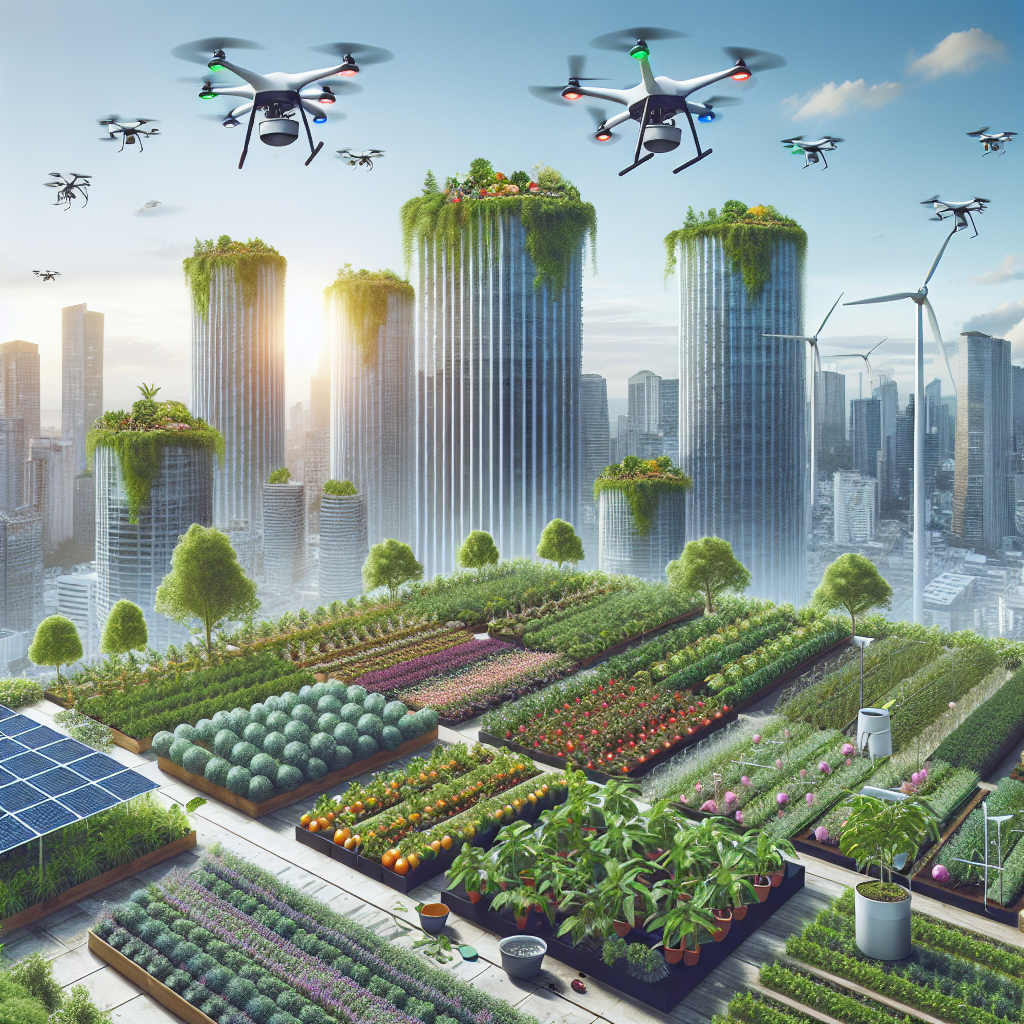Urban farming, also known as urban agriculture, is the practice of growing food in urban areas. With the world’s population increasing and more people living in cities, urban farming has become an important solution to provide fresh and sustainable food in urban areas. One of the key technologies that is transforming urban farming is artificial intelligence (AI). AI applications in urban farming are revolutionizing the way we grow food, making it more efficient, sustainable, and productive.
AI technology in urban farming involves the use of advanced algorithms and data analysis to optimize the growing process. By collecting data on factors such as temperature, humidity, soil quality, and plant growth patterns, AI can provide insights that help farmers make better decisions in real-time. This allows for more precise control over growing conditions, leading to higher yields and better quality crops.
One of the key applications of AI in urban farming is in the use of vertical farming systems. Vertical farming involves growing crops in stacked layers, using artificial lighting and controlled environments to maximize space and resources. AI can help optimize the conditions within vertical farming systems, adjusting factors such as light intensity, temperature, and nutrient levels to ensure optimal growth. This results in higher yields and faster growth cycles, making vertical farming a more efficient and sustainable way to grow food in urban areas.
AI can also be used to monitor plant health and detect diseases early on. By analyzing images of plants and tracking changes in growth patterns, AI algorithms can identify potential issues before they become serious problems. This allows farmers to take proactive measures to prevent crop losses and maintain the health of their plants. This is particularly important in urban farming, where space and resources are limited, and any loss of crops can have a significant impact on food production.
Another application of AI in urban farming is in the use of robotics. Robots can be used to automate tasks such as planting, watering, and harvesting, reducing the need for manual labor and increasing efficiency. AI algorithms can control and coordinate the movements of robots, making them more precise and effective in their tasks. This not only saves time and labor costs but also allows for round-the-clock monitoring and care of crops, leading to higher yields and better quality produce.
AI can also be used to optimize resource use in urban farming. By analyzing data on water usage, energy consumption, and nutrient levels, AI algorithms can suggest ways to reduce waste and improve efficiency. This can help urban farmers save money on resources and reduce their environmental impact. For example, AI can recommend the use of specific nutrients at certain times to maximize plant growth, or adjust watering schedules based on weather forecasts to avoid overwatering.
Overall, AI applications in urban farming are transforming the way we grow food in cities. By leveraging advanced technology and data analysis, urban farmers can increase productivity, reduce costs, and improve sustainability. With the world’s population expected to reach 10 billion by 2050, the need for innovative solutions to feed a growing urban population is more urgent than ever. AI in urban farming is a promising approach that can help meet this challenge and ensure a secure and sustainable food supply for future generations.
FAQs:
1. How does AI help in vertical farming?
AI helps in vertical farming by optimizing growing conditions, such as light intensity, temperature, and nutrient levels, to maximize crop yields. AI algorithms can analyze data in real-time and make adjustments to ensure optimal growth, leading to higher productivity and faster growth cycles.
2. Can AI detect plant diseases in urban farming?
Yes, AI can detect plant diseases in urban farming by analyzing images of plants and tracking changes in growth patterns. By identifying early signs of disease, AI algorithms can help farmers take proactive measures to prevent crop losses and maintain plant health.
3. How does AI optimize resource use in urban farming?
AI optimizes resource use in urban farming by analyzing data on water usage, energy consumption, and nutrient levels. By providing recommendations on how to reduce waste and improve efficiency, AI algorithms help urban farmers save money on resources and reduce their environmental impact.
4. What are the benefits of using robotics in urban farming?
Using robotics in urban farming can automate tasks such as planting, watering, and harvesting, reducing the need for manual labor and increasing efficiency. AI algorithms can control and coordinate the movements of robots, making them more precise and effective in their tasks, leading to higher yields and better quality produce.

